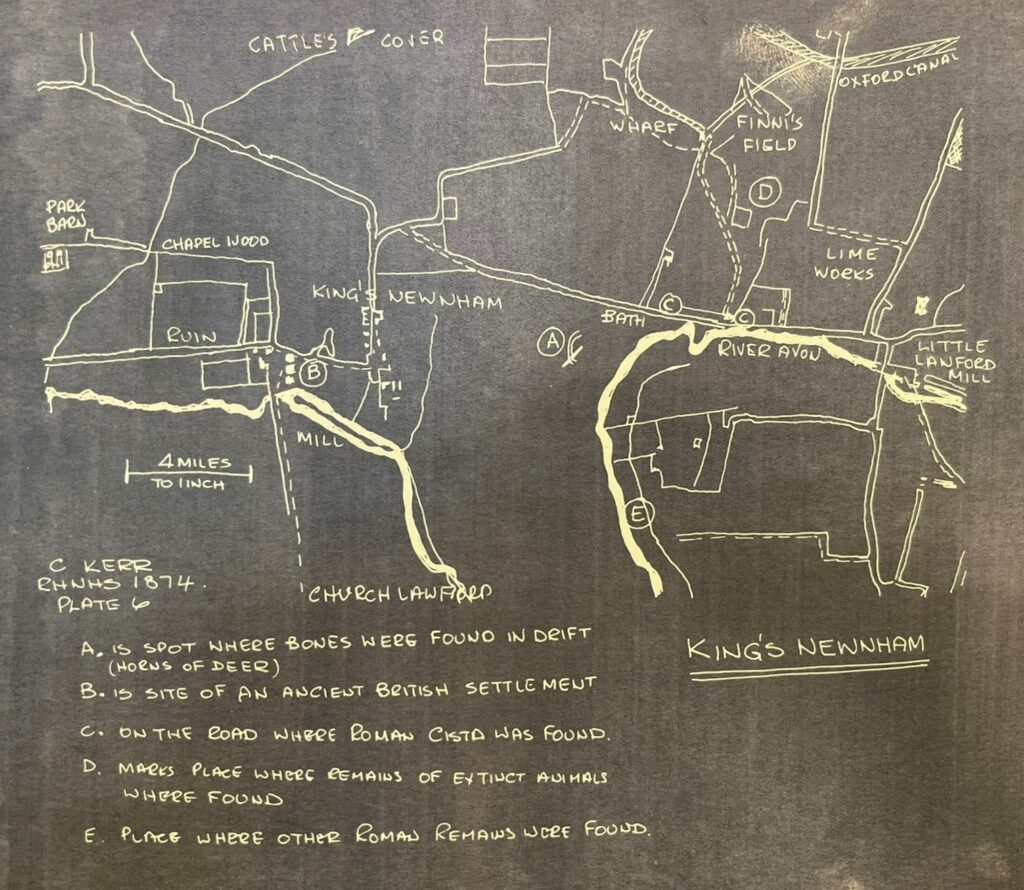In 1962 members of the Rugby Percival Guildhouse Archaeological Group initiate a study based on an aerial photograph of the parish which showed a possible archaeological site in the Rookery Hall Farm area of Church Lawford. The group had originally been formed to look at the site of a Roman Town called Tripontium in the Churchover area, and this was a project looking for related items in the Avon Valley downstream of Rugby.
They reviewed the photograph, produced by James Pickering, and gained permission from the farmer at Rookery Hall Farm – George Wotherspoon – to excavate areas of interest that the photograph had revealed.
After several trenches were dug the remains of a dry-built limestone wall extending 80 feet, with parts of the wall being filled with iron slag, which suggested the presence of an ancient kiln.
Mr J Eaton and a team of boys from Rugby School helped dig a further trench to find more evidence of the kiln, along with fragments of pottery, some clinker and an iron nail, but the find did not provide enough material to allow accurate dating.
The findings were summarised by a member of the Society, Albert Barnett, during his review of the area in 1973. He produced detailed historic plans and maps of the area, based on the historic records available – including those found in the maps section of this archive. He carefully redrew and reannotated existing documents to provide a better resource for the researchers into the archaeological possibilities of Church Lawford, King’s Newnham and the Easenhall area.
Albert also looked at the background to the various field names in both Parishes, the possible location and history of the Stude, thought to have been located on Dunsmore Heath or near Rookery Hall Farm, and he also plotted earlier findings in the King’s Newnham area.

The group is now known as the Rugby Archaeological Group, and their assistance has been invaluable in producing this summary. The Rugby Library Local History section have the full set of A W Barnett’s maps and drawings relating to his studies discussed above.
